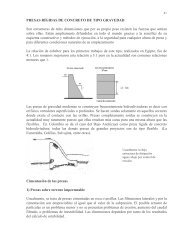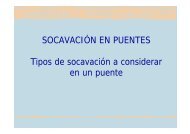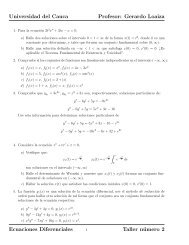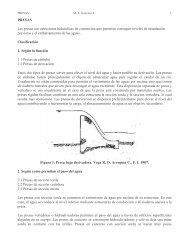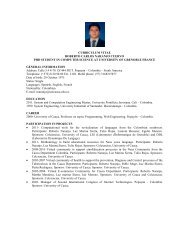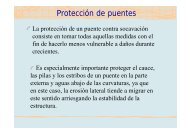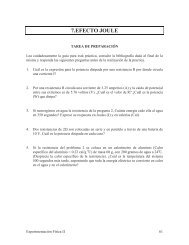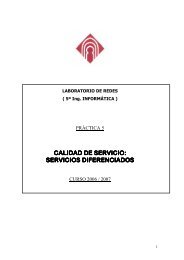Advice for the Project Management Professional (PMP)
Advice for the Project Management Professional (PMP)
Advice for the Project Management Professional (PMP)
Create successful ePaper yourself
Turn your PDF publications into a flip-book with our unique Google optimized e-Paper software.
Licensed to:<br />
410<br />
Appendix B<br />
idea to go through every question somewhat quickly and mark those questions<br />
on which you want to spend more time. If you mark 79 questions or less<br />
(<strong>the</strong> total number you can miss to get 60.5 percent on all 200 questions), you<br />
should pass <strong>the</strong> exam. Remember that 25 of <strong>the</strong> questions are not scored,<br />
and you need 60.5 percent correct on <strong>the</strong> 175 scored questions.<br />
2. The time allotted <strong>for</strong> <strong>the</strong> exam is four hours, and each multiple-choice question<br />
has four answer choices. You should have plenty of time to complete <strong>the</strong><br />
exam. Use <strong>the</strong> first two to three hours to go through all of <strong>the</strong> questions. Do<br />
not spend too much time on any one question. As you work, mark each question<br />
that you would like to return to <strong>for</strong> fur<strong>the</strong>r consideration. Then use <strong>the</strong><br />
remaining time to check <strong>the</strong> questions you are not sure of. If you’re a morning<br />
person, schedule your exam in <strong>the</strong> morning. If you work better after<br />
lunch, schedule an afternoon exam. Make sure you are alert and well rested<br />
when you go in to take <strong>the</strong> exam.<br />
3. Some people believe it is better to change answers you were originally unsure<br />
of. If you think that a different answer is better, after reading <strong>the</strong> question again,<br />
<strong>the</strong>n change your answer. Don’t get hung up on any questions. Move on and<br />
focus on answering <strong>the</strong> questions you can answer correctly.<br />
4. Do not try to read more into <strong>the</strong> questions than what is stated. There are no<br />
trick questions, but some may be poorly worded or just bad questions. Remember<br />
that <strong>the</strong>y were written by volunteers and are part of a huge test bank. Most<br />
of <strong>the</strong> questions are relatively short, and <strong>the</strong>re are only four options from<br />
which to choose <strong>the</strong> answer.<br />
5. To increase your chances of getting <strong>the</strong> right answer, first eliminate obviously<br />
wrong options, and <strong>the</strong>n choose among <strong>the</strong> remaining options. Take <strong>the</strong> time<br />
to read all of <strong>the</strong> options be<strong>for</strong>e selecting an answer. Remember you have to<br />
pick <strong>the</strong> best answer available.<br />
6. Some questions require doing calculations such as earned value management.<br />
It is worthwhile to memorize <strong>the</strong> earned value <strong>for</strong>mulas to make answering<br />
<strong>the</strong>se questions easier. You may use a nonprogrammable calculator while taking<br />
<strong>the</strong> exam, so be sure to bring one to make per<strong>for</strong>ming calculations easier.<br />
7. You should be given two pieces of blank paper to use during <strong>the</strong> exam. You<br />
might want to bring <strong>the</strong> paper yourself to make sure it is available. Be<strong>for</strong>e starting<br />
<strong>the</strong> test, you should write down important equations so that you do not<br />
have to rely on your memory. When you come to a question involving calculations,<br />
write <strong>the</strong> calculations down so you can check your work <strong>for</strong> errors. See<br />
Table B-2 <strong>for</strong> a summary of <strong>for</strong>mulas you should know <strong>for</strong> <strong>the</strong> <strong>PMP</strong> exam.<br />
8. Read all questions carefully. A few sections of <strong>the</strong> test require that you answer<br />
three to four questions about a scenario. These questions can be difficult; it<br />
can seem as if two of <strong>the</strong> choices could be correct, although you can choose<br />
only one. Read <strong>the</strong> directions <strong>for</strong> <strong>the</strong>se types of questions several times to be<br />
sure you know exactly what you are supposed to do. Also, remember important<br />
concepts such as <strong>the</strong> importance of using a WBS, emphasizing teamwork,<br />
and practicing professional integrity. You might want to skip <strong>the</strong> longer<br />
or more difficult questions and answer <strong>the</strong> shorter or easier ones first.<br />
Copyright 2009 Cengage Learning. All Rights Reserved.<br />
May not be copied, scanned, or duplicated, in whole or in part.



